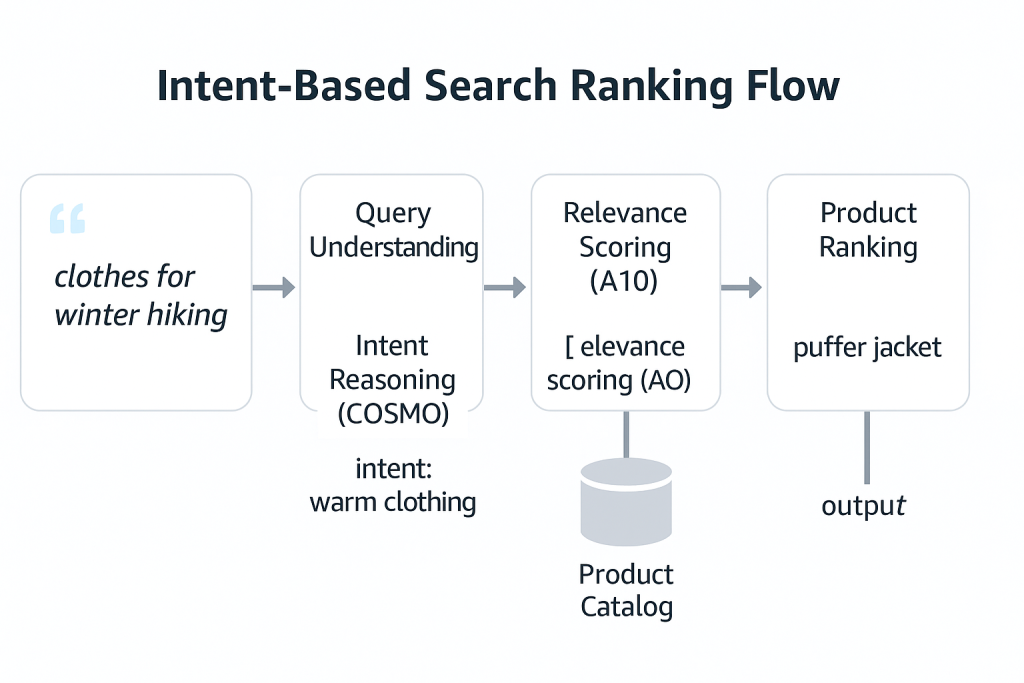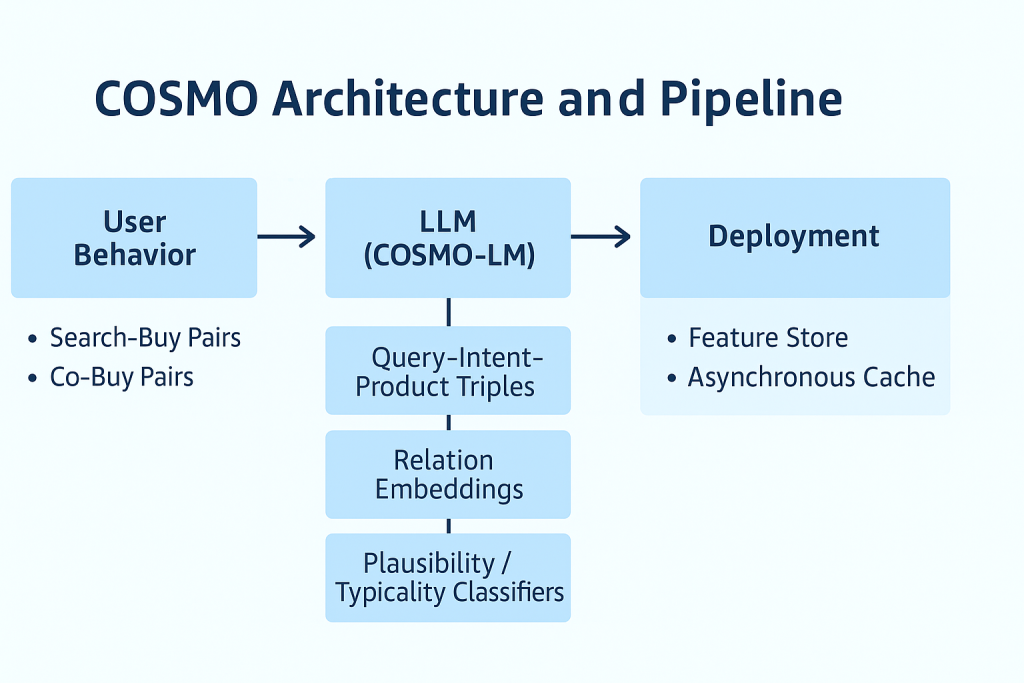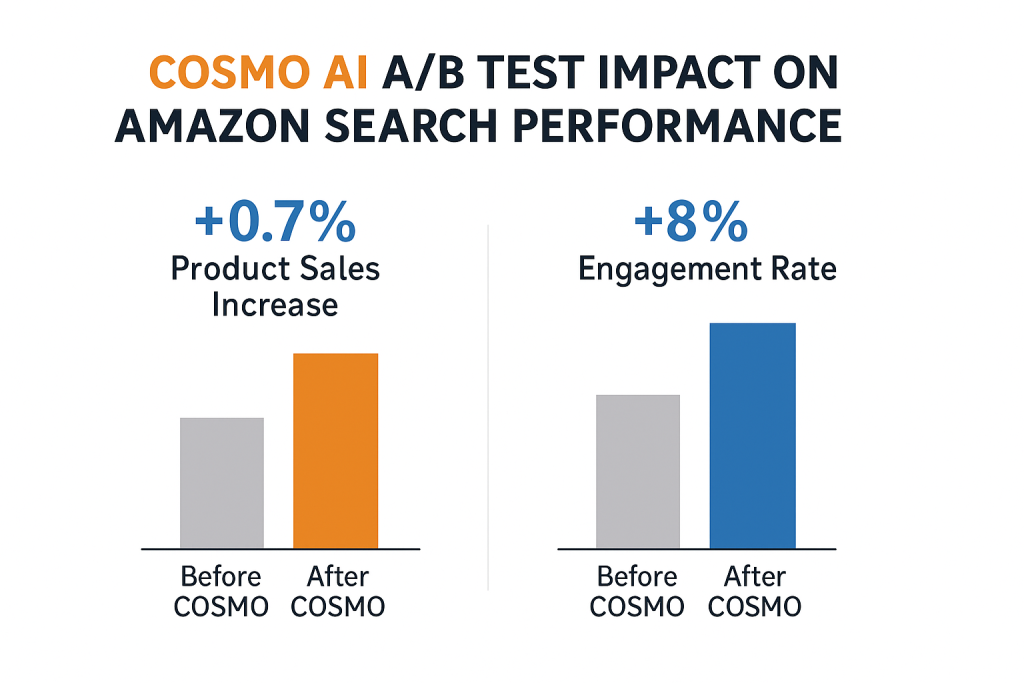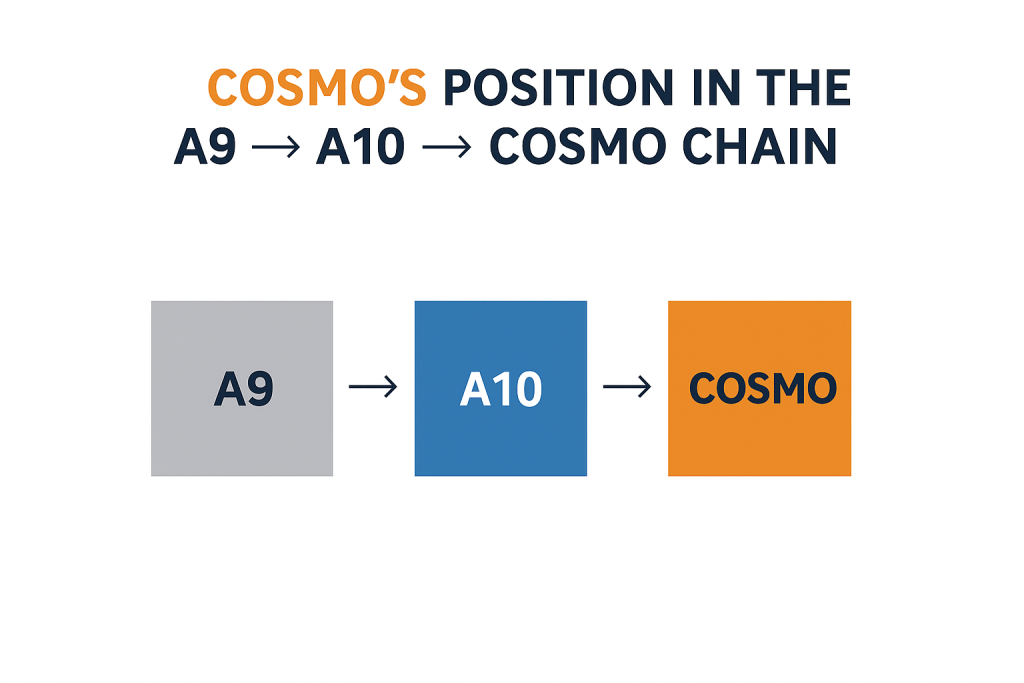Amazon’s COSMO AI is quietly redefining how products are ranked and recommended. For years, sellers have optimized for A9 and A10 ranking signals — keywords, conversions, reviews, and traffic.
But now, COSMO brings something entirely new: machine-generated common sense.
Instead of matching words, Amazon’s new system interprets the intent behind every search and purchase. COSMO AI doesn’t just read data — it reasons through it. It knows why users buy, not just what they buy.
For Amazon sellers, this means one thing: search optimization is evolving again.
What Is Amazon COSMO AI?
COSMO stands for Common Sense Modeling — Amazon’s large-scale, AI-driven system for generating and serving e-commerce common sense knowledge.
Developed by Amazon Science and presented at the 2024 SIGMOD Conference, COSMO was built to make search and recommendation engines understand user intent like a human does.
Rather than relying only on product metadata or co-purchase graphs, COSMO analyzes millions of behavioral patterns — searches, clicks, and purchases — to infer what customers are truly trying to do.
Example:
- Old approach: The algorithm links “jacket” and “scarf” because they’re often bought together.
- COSMO approach: It links them because “people buy jackets and scarves to stay warm in winter.”
That single difference — understanding the why — drives more relevant search results, smarter recommendations, and a better shopper experience.
How COSMO AI Fits Into the Amazon Search Algorithm

To understand COSMO’s role, let’s break the Amazon search process into layers:
- Query Understanding: Detects meaning and context behind the shopper’s words.
- Retrieval: Finds potentially relevant ASINs.
- Ranking: Orders products by probability of purchase (using A9/A10 logic).
- Post-Ranking Optimization: Adjusts based on engagement, CTR, and conversion feedback.
COSMO AI operates between layers 1 and 3 — enhancing both query understanding and relevance scoring. It acts as a bridge between language and behavior, converting vague text into meaningful intent vectors that A10 can interpret more precisely.
For instance, a shopper typing “clothes for winter hiking” might see COSMO expand intent nodes such as “thermal leggings,” “fleece jacket,” or “insulated boots.” Those signals then feed directly into the A10 ranking engine.
This is a fundamental shift: Amazon Search now thinks in relationships, not just keywords.
The Technology Behind COSMO
1. Mining User Behavior at Scale
COSMO ingests two types of behavior pairs:
- Search-buy pairs — queries that led to purchases (e.g., “baby shoes → waterproof toddler boots”).
- Co-buy pairs — products purchased together (e.g., “camera” + “tripod”).
Across 18 product domains — from Electronics to Baby Products — Amazon analyzed billions of events, then sampled millions of representative pairs to train the model.
2. LLM-Generated Knowledge
Using massive language models (OPT-175B and LLaMA 13B), COSMO generates structured “common sense” statements that explain human motivation behind purchases. For example:
Query: “winter coat” Product: “puffer jacket” Generated explanation: “provides high-level warmth for cold weather.”
Each explanation becomes a node in a vast knowledge graph connecting queries, intentions, and products.
3. Human-in-the-Loop Refinement
Since AI generations can be noisy, Amazon used human annotators to rate each generated statement for two key metrics:
- Plausibility: Does it make sense?
- Typicality: Is it a realistic, common reason to buy?
The model was then instruction-tuned on these judgments — producing an e-commerce-specific language model called COSMO-LM. This LLM generates faithful, human-aligned reasoning at scale, with minimal annotation cost.

From Data to Deployment: How COSMO Runs Inside Amazon
1. Instruction-Tuned Model
COSMO-LM was fine-tuned on 30,000 annotated examples to follow natural-language “instructions” for reasoning about e-commerce behavior. It can now generate explanations, evaluate typicality, predict relevance, and infer intent in multiple categories simultaneously.
2. Feature Store + Cache Architecture
Amazon deploys COSMO through an advanced Feature Store and Asynchronous Cache Store system:
- The Feature Store stores structured intent embeddings and relations used by the A10 engine and recommendation models.
- The Cache Store handles frequent search queries with ultra-low latency, updating daily from new logs.
This design meets Amazon’s strict latency requirements while keeping infrastructure costs low — critical when serving hundreds of millions of searches daily.
3. Continuous Learning Loop
Every click, dwell time, or add-to-cart event feeds back into COSMO’s data pipeline, constantly refining how the system interprets user goals. This creates an evolving feedback loop between human behavior and machine reasoning.
How COSMO AI Improves Search Relevance
The original A9/A10 models mainly relied on behavioral statistics — CTR, conversions, and price — to infer relevance. COSMO injects semantic understanding on top of that foundation.
Bridging the Semantic Gap
There’s often a disconnect between how customers search and how products are listed. COSMO bridges that gap through reasoning:
- Query: “outdoor dinner” → COSMO infers “patio furniture” and “string lights.”
- Query: “dog walking rain gear” → COSMO links to “waterproof jackets” and “non-slip boots.”
By understanding the intent behind the words, Amazon Search can rank listings that truly meet user needs — even if exact keywords don’t match.
Measured Results
In internal evaluations, COSMO-enhanced models achieved:
- +60% Macro-F1 improvement in intent classification.
- +30% Micro-F1 improvement in query-product relevance.
These results surpassed the top models of the KDD Cup 2022 public Amazon dataset, demonstrating how reasoning-based knowledge boosts ranking precision.

COSMO in Recommendations and Personalization
Beyond search, COSMO improves session-based recommendations by predicting what users will do next — not just what they did last.
For example, if a user searches “home office setup,” clicks a “standing desk,” and adds a “chair mat,” COSMO predicts the next probable need: “ergonomic monitor stand.”
Amazon implemented this logic in COSMO-GNN (Graph Neural Network), combining behavioral data with intent reasoning. Results showed:
- +4–6% increase in Hits@10 (recommendation accuracy).
- Stronger improvements in categories with complex decision paths, like Electronics.
The more COSMO learns, the more Amazon’s recommendation engine feels human.
Search Navigation Reinvented
COSMO also powers a new approach to Amazon’s search navigation — replacing static category trees with dynamic, intent-driven paths.
Instead of forcing users through fixed browse nodes, COSMO builds contextual hierarchies in real time:
- Broad intent: Camping
- Refined: Winter Camping
- Next-level: Mountain Camping
- Final suggestions: 4-person tent, insulated sleeping bags, thermal mats
This multi-turn, conversational style navigation mirrors how a real human assistant would guide a shopper. In early A/B tests covering 10% of U.S. traffic, Amazon reported:
- +0.7% increase in product sales (equating to hundreds of millions in annual revenue).
- +8% increase in navigation engagement rate.
That’s an extraordinary impact for a single AI-powered search feature with limited screen exposure.
What COSMO Means for Amazon Sellers
1. Intent Alignment Is the New SEO
Amazon’s algorithm now rewards listings that align with shopper intentions, not just exact-match keywords. Descriptions, bullet points, and A+ Content should answer why customers buy your product.
Example:
- ❌ “Insulated water bottle – stainless steel – 1L”
- ✅ “Keeps drinks cold all day during hiking, workouts, or long shifts.”
The second one aligns with COSMO’s reasoning model — it provides a purpose, not just specs.
2. Optimize for Semantic Context
Include contextual keywords and situational benefits throughout your listing — “for travel,” “for toddlers,” “for office use,” etc. COSMO interprets those as intent markers that improve ranking relevance.
3. Build Listing Networks
Because COSMO also analyzes co-buy relationships, having multiple complementary listings (e.g., “shampoo + conditioner”) helps Amazon understand your product ecosystem. Interconnected listings boost visibility in “Frequently Bought Together” and “Recommended For You” sections.
4. Keep Conversion Data Clean
COSMO learns from behavioral patterns. If you drive irrelevant traffic through misleading ads or keywords, it will associate your ASINs with the wrong intent — hurting future visibility. Focus on accurate targeting and genuine engagement.
How COSMO Connects to A9, A10, and Polaris

COSMO doesn’t replace A10 — it enhances it. It acts as the semantic intelligence layer feeding into the A10 relevance and ranking systems.
Think of it as a chain:
- A9 → Keyword-based ranking foundation.
- A10 → Behavior-driven, buyer-focused ranking logic.
- COSMO → Common-sense reasoning engine that interprets intent.
- Polaris (Walmart’s counterpart) → Competing model also adding intent-based scoring.
COSMO makes Amazon’s algorithm behave more like a recommendation engine and less like a search engine — ranking based on meaning and purpose, not just words and clicks.
For a detailed comparison between these ranking systems, see our analysis of the Walmart Polaris Algorithm.
The Future of Amazon Search
COSMO signals the next stage of Amazon’s evolution — from transactional to cognitive search. Future versions will likely connect even deeper layers of data, such as:
- Voice shopping (“Alexa, find something for dry skin”) interpreted via COSMO’s reasoning graph.
- Multimodal search (image + text) fused with intent-based understanding.
- Predictive recommendations that pre-rank listings before users even finish typing.
In essence, Amazon Search is turning into a self-improving reasoning engine — one that learns how humans think, shop, and decide.
Key Takeaways for Sellers
- ✅ COSMO AI analyzes why people buy, not just what they type.
- ✅ It feeds semantic intent directly into A10’s ranking signals.
- ✅ Optimizing listings for context, purpose, and use case will future-proof your visibility.
- ✅ Internal linking between complementary ASINs strengthens your brand graph.
- ✅ Clean, behaviorally accurate traffic improves how COSMO classifies your products.
For Amazon sellers, this means the game is no longer about chasing keywords — it’s about aligning with human intention. Sell the reason, not the product.
Further Reading
- Amazon Search Ranking Factors Explained
- Walmart Polaris Algorithm: The Competitor Model
- Understanding the Amazon A10 Algorithm
Final Thoughts
Amazon COSMO AI represents the biggest leap in marketplace search intelligence since A10. By embedding “common sense” into the algorithm, Amazon isn’t just matching queries — it’s understanding the customer’s mission.
For sellers, it’s time to evolve your listings from keyword-stuffed to intent-rich storytelling. The future of ranking belongs to those who communicate purpose, not just product specs.
